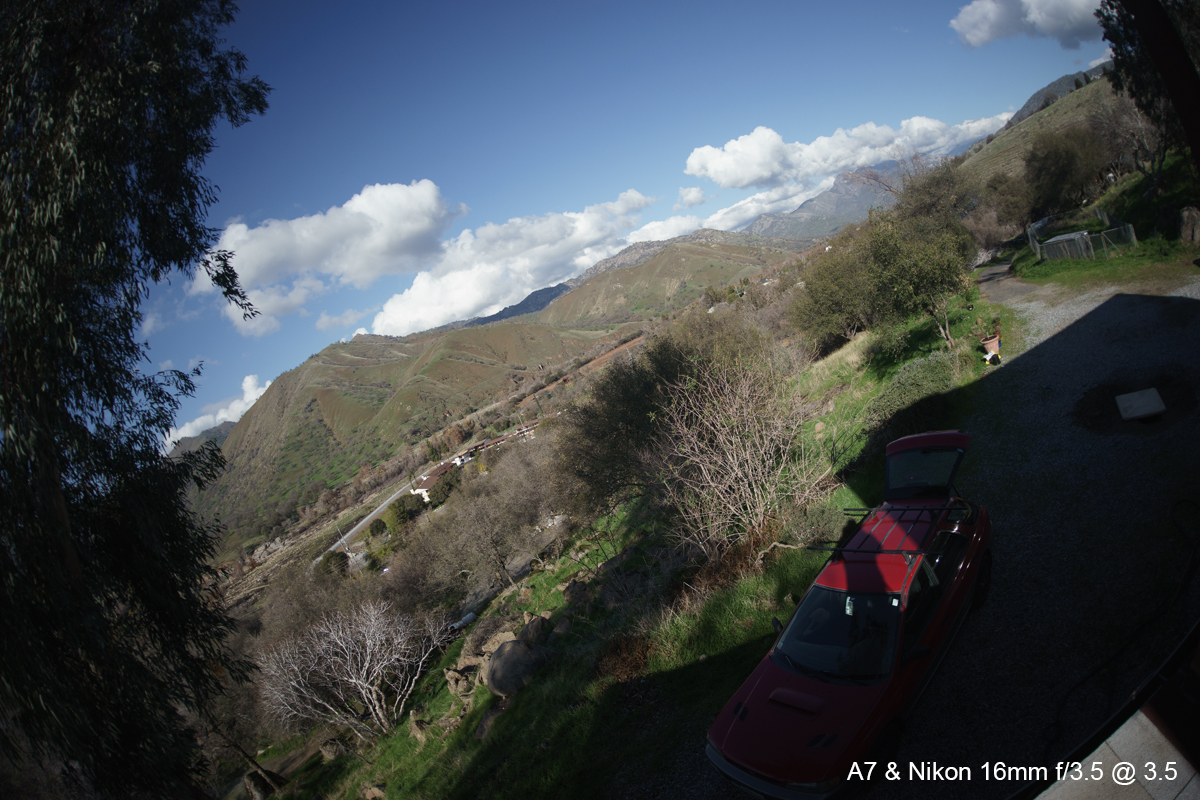
| Darin McQuoid | Blog | Reviews | Tutorials | River Directory |
Sony A6000 +
Lens Turbo II vs Sony A7
Lens: Nikon 16mm f/3.5 Fisheye
Lens: Nikon 16mm f/3.5 Fisheye
Designed in the early 70's, my
copy of Nikon's 16mm f/3.5 fisheye was made some time in 1977 and they
have a reputation as an optically better lens than
the later 16mm f/2.8 AI or 16mm f/2.8 AF. Part of the reason is quite
simple;
the 16mm f/3.5 "only" has a 170 degree field of view, while the later
f/2.8 models give a full 180 degree view. Typically cheaper than the
f/2.8 versions on the used market, the price can vary wildly as it's
not a particularly common lens, expect to pay $300-500. My copy was
quite beat up when I bought
it, and has gotten more so over time as I treat camera equipment as a
tool for
the job.
Here is the Nikon 16mm f/3.5 attached to the Sony A7.

Visibility on this day is well
over twenty
miles. Shot on a tripod, shutter speeds fast enough to eliminate any
kind of shake. Manually focused on the barn just off center, at maximum
aperture and focus left there, no adjustments made for
focus shift or field curvature. White balance set to daylight.
Overall field of view, the 16mm f/3.5 doesn't have as much distortion as most fisheyes, and very little with the light crop left from the Lens Turbo II on the A6000.

In the center I'd say the 16mm f/3.5 on the A7 is a touch sharper with better contrast.

Lower down in the frame.

This is in the top righ extreme corner.

This performance wide open on the A7 or the A6000 with the Lens Turbo II is just incredible for a lens this old.
Rather than slog through f/4 and f/5.6 I'll jump to f/8 where this lens is going to be used for extreme depth of field.


